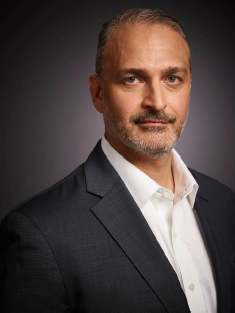Conversations with corporate researchers
James Petretti
SVP, U.S. and Global Production Research
Sony Pictures Television
 Sony Pictures Television works with multiple platforms – broadcast networks, cable networks, digital, etc. What are the challenges of leading an insight team in this setting? Benefits?
Sony Pictures Television works with multiple platforms – broadcast networks, cable networks, digital, etc. What are the challenges of leading an insight team in this setting? Benefits?
Sony Pictures is a producer of premium television content for all platforms, and our research team is a shared resource which supports production and sales across all outlets. In order to succeed, we are organized as a single, holistic, cross-functional team. That’s both rewarding and challenging for us individually and as an organization. It’s rewarding because it empowers our team to bring more dynamic thinking and richer insights into everything we do. We aren’t familiar with just one slice of our industry, but rather we bring a broader set of experiences and a truly holistic understanding of the market and our industry today. Our consumers, after all, are watching programming across all platforms, and I believe we are better able to serve them and our organization from that perspective. It’s also incredibly challenging because the entertainment marketplace is more complex than ever before and continues to grow increasingly so every day. Never have consumers had so many entertainment choices, and it’s all on their terms today – what they want, when they want, how they want it.
Our industry is based on a linear broadcast consumption model that is increasingly shifting to an on-demand experience. We are also challenged because we produce and distribute content to our client network and video platforms, so we don’t own and don’t always get data on consumption. Trying to break through these walled gardens of data is a challenge, but we’ve also made some significant progress in this area over the past few years. We’ve done some groundbreaking work with Nielsen to help create new measurement systems in the non-linear space.
Of all the market segments you research, is there one that seems more open to participating in the research process than others?
One of the great things about working in entertainment, and especially television, is that we have passionate consumers who are excited to share their opinions with us. They want to tell us about their personal experiences, viewing habits and feelings. We’re very fortunate here.
Will you be exploring any new methodologies or tools in 2020?
One of the new things we’ve been exploring is biometric testing. It’s done on our feature film side, especially as it relates to our positioning and advertising. We’re trying to see if there are ways to incorporate that not just into the marketing of our television programs, but potentially into concept and content testing as well.
What is your greatest concern for the future of research and analytics?
I have lots of concerns. As it relates to television, first and foremost, I am concerned about how much data we deal with today. It keeps growing with more dimensions to it than ever before, making it more complex and time consuming to analyze. We need to make sure we are looking at the right sets of information and we need to know each data set’s strengths and limitations. What’s more, all this data needs to be cleaned, harmonized and vetted. As a result, our bandwidth has never been more strained.
At the same time, the speed at which the marketplace and our organizations want meaningful insights is also increasing. That puts additional pressure on getting an answer instead of focusing on ensuring we are getting the right answer.
What’s more, everyone is so inundated and pulled in so many different directions that they don’t take the time to ensure we are all communicating clearly and effectively. Context is key. Data and the complexity of using it properly is so often misunderstood. It isn’t an empirical answer in and of itself, and it doesn’t provide a strategy or a vision. It’s a tool that, when analyzed and discussed – and then often reanalyzed and re-discussed, several times over – produces true insights to help inform the decisions that we need to make and ensure we can create a strategy to achieve our vision.
What excites you about coming to work each day?
I am excited to help create programming for the future of television. Our studio creates content for all platforms of viewing. We want to be everywhere consumers are today and everywhere they will be going in the future. As new content platforms continue to emerge, it’s our job to identify where viewers are going and how we can succeed there. I also continue to learn something new every day – and every day is a new challenge – that excites me!
